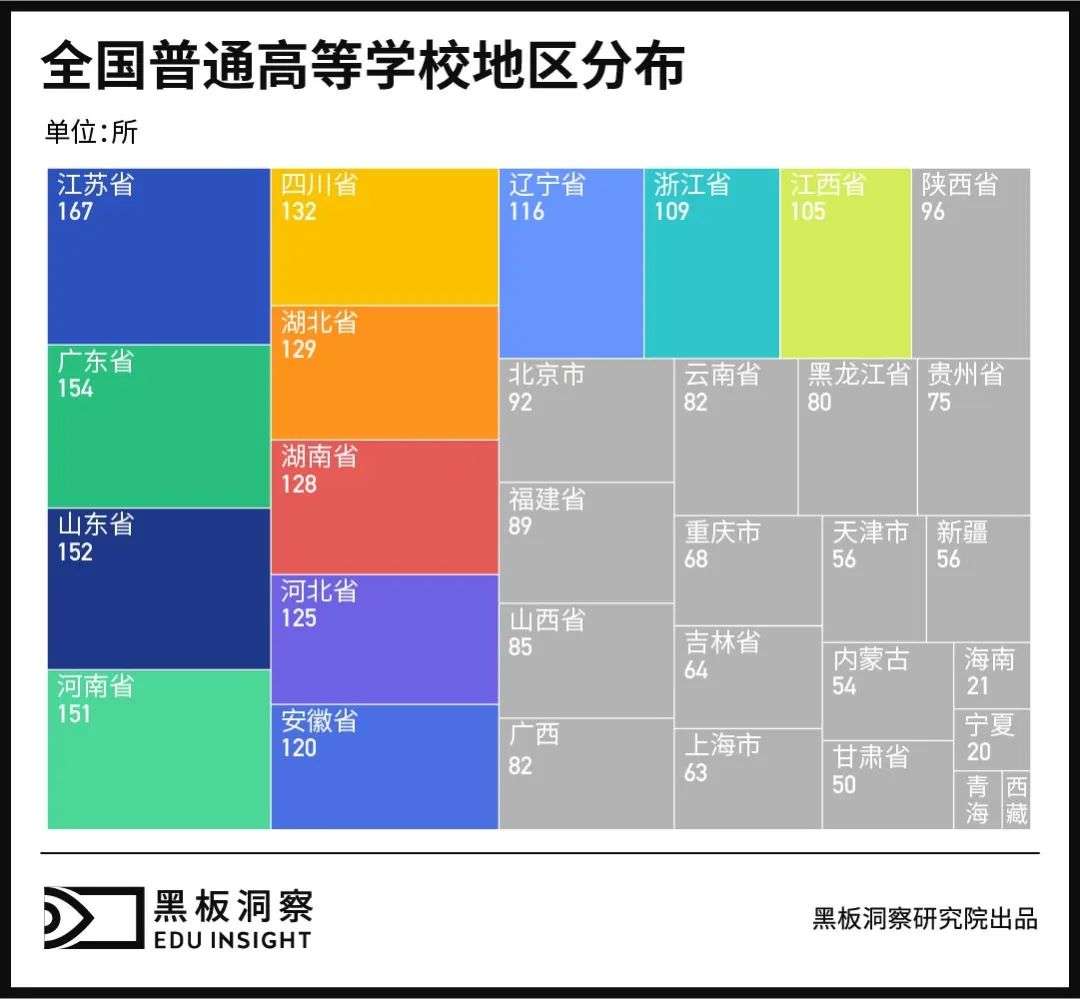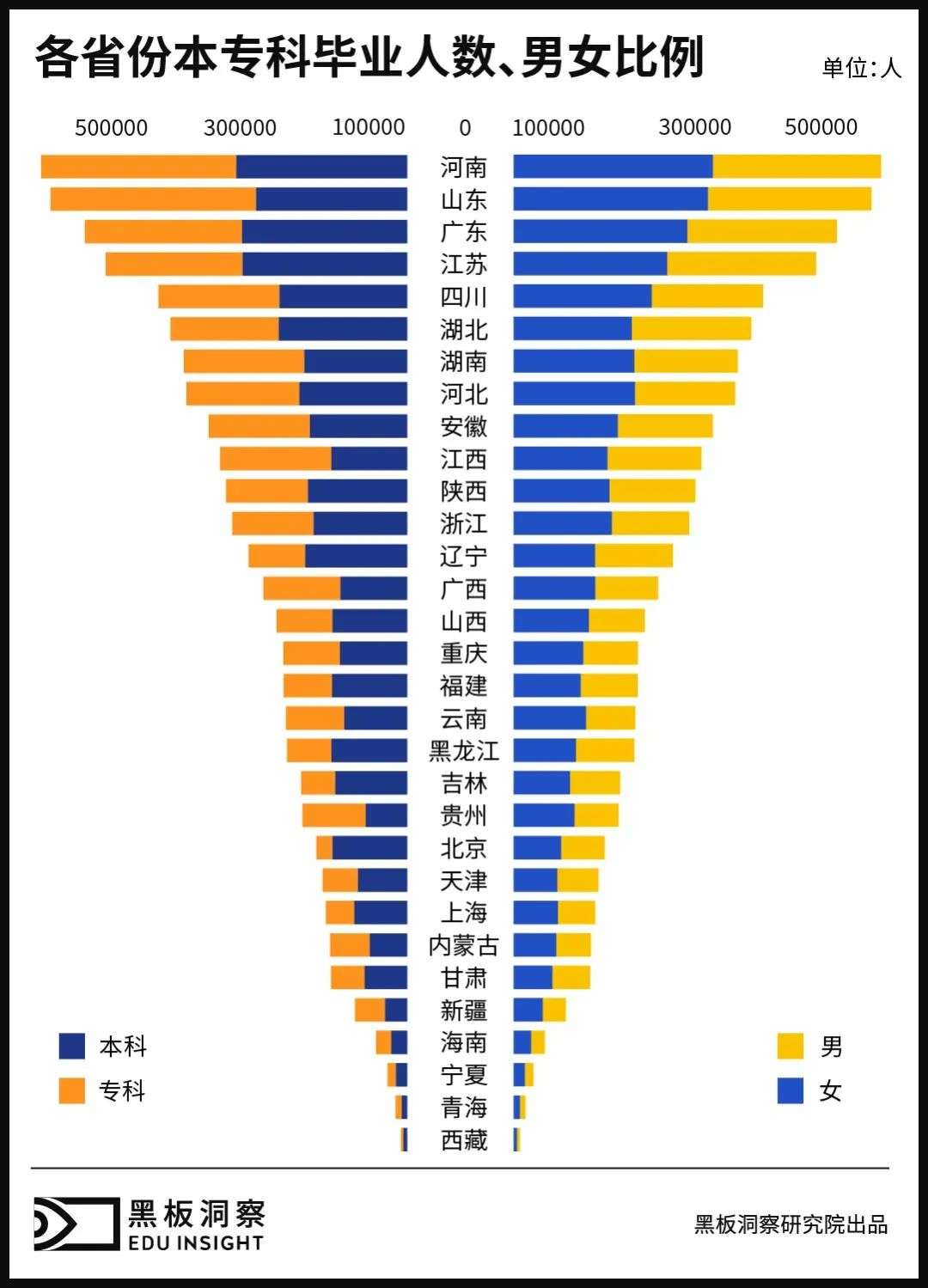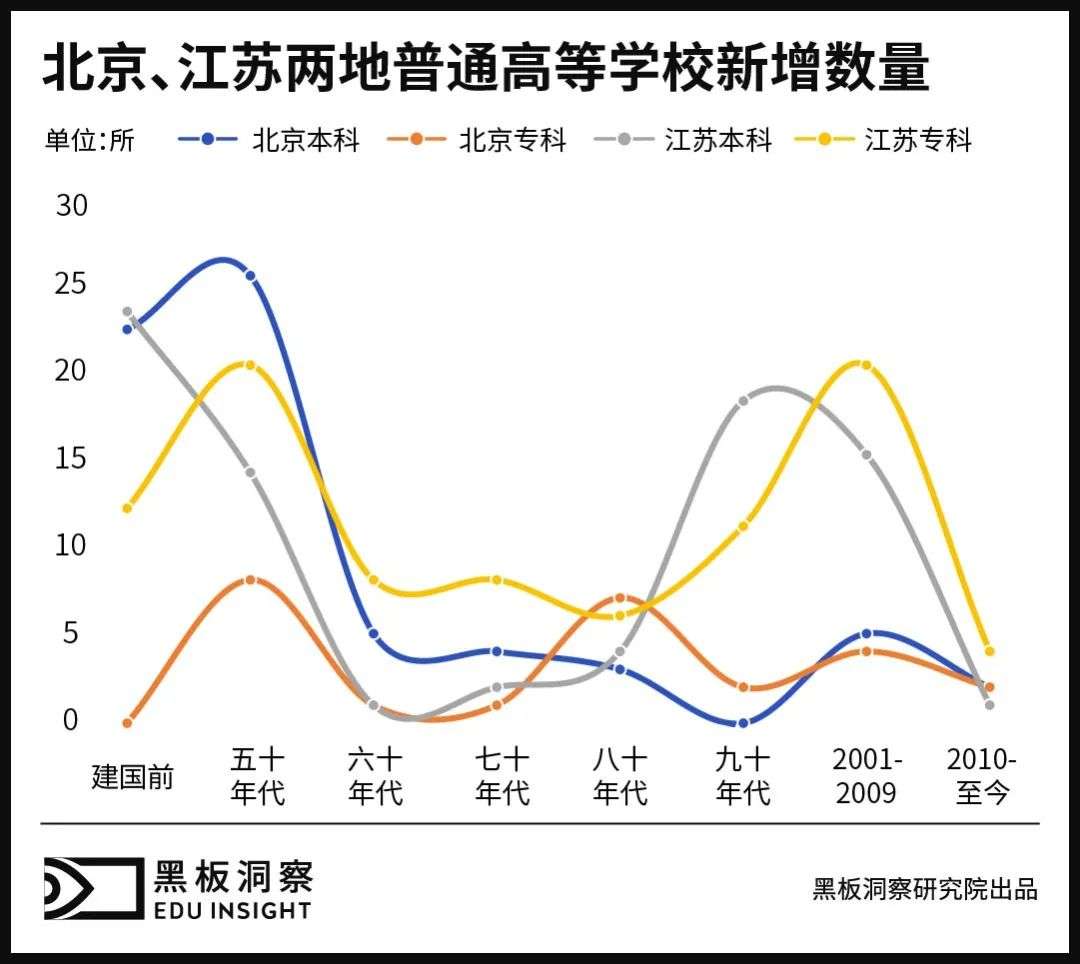p>
Through statistics on the number of ordinary colleges and universities in various regions of the country, we can see that the number of universities in Jiangsu, Guangdong, Shandong, Henan and other places has exceeded 150. At the same time, these provinces are also The college entrance examination is a big province. The Tibet Autonomous Region has the least number of colleges and universities, with only seven, of which four are undergraduate colleges and universities, most of which are located in Lhasa.
In “Beijing, Shanghai, Guangzhou and Shenzhen”, there are 92 universities in Beijing, 63 in Shanghai, 82 in Guangzhou, and 8 in Shenzhen. Except for Guangzhou, there are more undergraduate colleges than junior colleges in other regions. On the whole, there are more junior colleges than undergraduate colleges in over two-thirds of the country. The expansion of undergraduate enrollment has been initiated since the end of the last century. In 2019, the “Government Work Report” proposed to expand the enrollment of higher vocational (technical) colleges by 1 million; in July 2020, the Ministry of Education issued a plan to expand the enrollment of higher vocational schools by 2 million.
3. Time distribution of establishment of ordinary higher education institutions
By analyzing the establishment time of ordinary higher education institutions in Beijing and Jiangsu, we found that many higher education resources in China have been accumulated since the eve of the founding of the People’s Republic of China (most of them were established during the Republic of China) Come down and have always benefited from the people. In the early days of the founding of the People’s Republic of China, the state paid close attention to education and adjusted existing colleges and universities, and a considerable number of private colleges and universities merged or ceased operations. After the Great Leap Forward, in accordance with the needs of economic and cultural development, most provinces and cities in our country opened colleges first to ensure the rapid development of society. In 1961, Jiangsu Province issued a document stating that it would control the scale of running schools and in principle no new schools would be built in the next 2 to 3 years. During the “Cultural Revolution”, my country’s ordinary colleges and universities stopped enrolling undergraduate and junior college students for 4 years.


